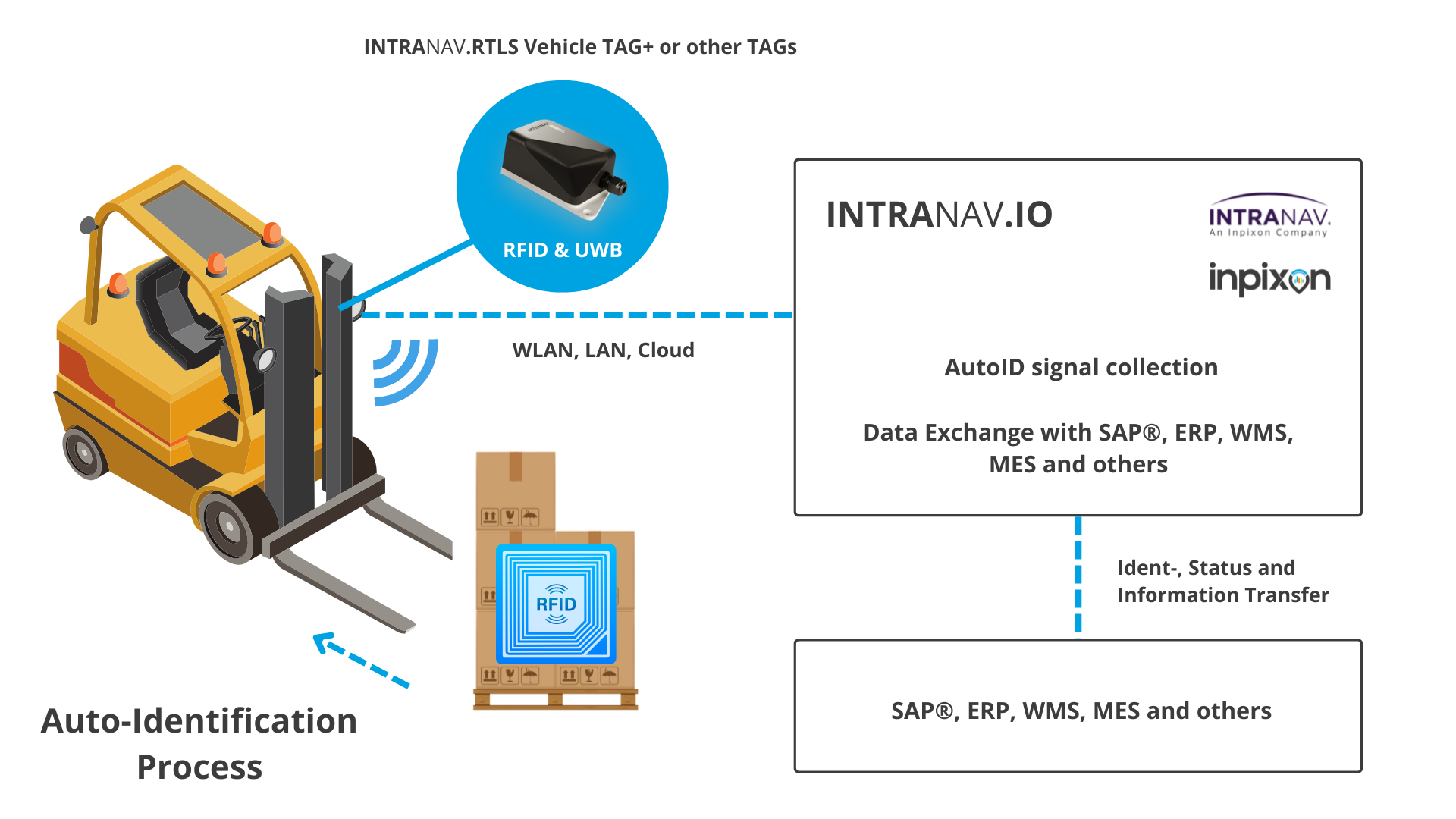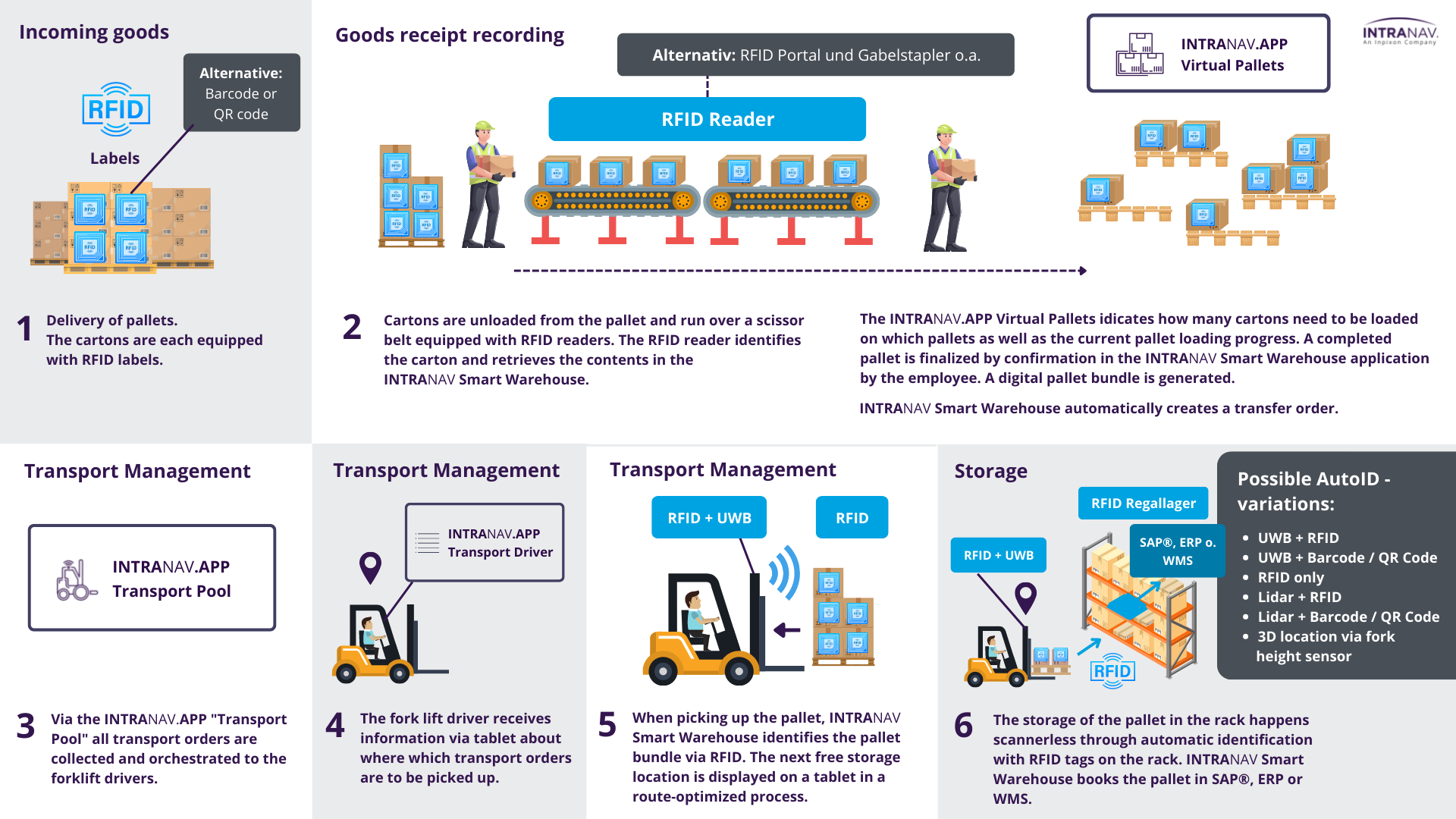June 30, 2022
From warehouses to supply chains, software-driven facilities are the future - and auto-ID is a key component of the automation of these facilities. Industry leaders are turning to software driven processes to make their facilities smarter and more efficient, especially with the rising competition in Industry 4.0. In this post we’ll go over what auto-ID is and how to integrate it into logistics and production processes.
Auto-ID refers to the automatic identification and data capture of any assets in a facility, from equipment to forklifts. With auto-ID, information about objects is automatically retrieved, and entered into computer systems without humans being involved, which gives organizations the ability to gain insights about their assets at any given time in a software-driven facility.
In a facility where the identification of these assets is done manually, workers are required to identify an asset or package by finding its serial number or material ID and scanning a barcode. But in software-driven facilities, auto-ID accomplishes this without barcode scanning because all assets are tagged with sensors that can be read automatically, without the need for human input.
The most popular technology used for auto-ID is radio-frequency identification (RFID), which uses electromagnetic fields to identify and locate tags attached to objects automatically. Another technology that can be used is a Real-Time Location System (RTLS) that leverages radio-frequency technologies such as Ultra-Wideband (UWB), Bluetooth (BLE) or chirp (CSS).
So if a package needs to be sent to a specific address, instead of a worker manually scanning the barcode with the shipment ID and bringing it to the truck, auto-ID means that the ID is recognized automatically and does not need to be handled manually. In facilities that use auto-ID, tagged objects also usually have a printed barcode as backup in case the RFID reader has been damaged or isn’t working properly.

When a tagged object is recognized, information on it can be easily found such as its material ID, article ID or production number. This can be specific to the type of materials, processes or industry that is being used.
The three main steps to take when integrating auto-ID into production processes and logistics are:
Depending on what facility auto-ID is being used in, there are a few more key considerations. For example, the type of RFID labels a company may choose to use greatly depends on the material or contents of assets. Companies that use steel objects need RFID labels compatible with metal, versus plastic or paper boxes which are okay to use with standard RFID labels. There are other labels that can be suitable for various use cases, such as handling food and beverage, which meet the standards of the FDA (Food and Drug Administration).
From a software perspective, companies need an auto-ID middleware such as INTRANAV.IO, which interconnects with ERP (Enterprise Resource Planning) or WMS (Warehouse Management systems.) It’s also crucial to be aware of integrations of software interfaces you may need such as REST API connected to an SAP system, or other enterprise resources needed.
It’s important to choose technologies that match your processes, be aware of trending technologies such as Near-Field communication (NFC) and Ultra-Wideband (UWB) which can enable auto-ID along with RFID, and make sure to meet requirements such as GSI 1 standards.
The main impact that auto-ID has on the supply chain are the time-savings and improved efficiencies that result from eliminating significant amounts of manual work. There are many human errors that can take place, from scanning the wrong items to material mismatching – but when done automatically, errors can be detected early on and generate an alert before they become an issue. When facilities are completely automated, it results in reduced operational and labor costs.
When looking into auto-ID, investing in an end-to-end solution can result in a greater ROI as every base is being covered. With INTRANAV.IO, a solution by INTRANAV (an Inpixon company), every aspect of auto-ID is covered - from the hardware needed to enable RFID and/or UWB, to the software that can collect and handle data, filter errors, and provide statistics on material flow.
With easy integrations, INTRANAV, an Inpixon company can easily implement auto-ID with a multitude of processes, whether the company is tracking forklifts, production process, fixed or mobile installation and more. On top of that, the solution works end-to-end, providing a holistic view of operations. This can even include implementing auto-ID with a company’s supplier, or even their own customers. Overall, organizations can take advantage of the following benefits:
Some best practice use cases where auto-ID is especially useful include:
Inpixon also specializes in mixed technologies, allowing organizations to have the option to use auto-ID that combines RFID and UWB for example. By having both RF technologies, it adds a layer of reliability and precision that can only improve operational efficiency.
An excellent example of this is the INTRANAV.Virtual Warehouse Solution, where manual scanning processes from inbound to outbound are completely replaced by Auto-ID processes.

Looking to start your journey with auto-ID? We’ve got you covered. Contact us today and discover what’s possible for the digital transformation of your facilities and supply chains.
Back